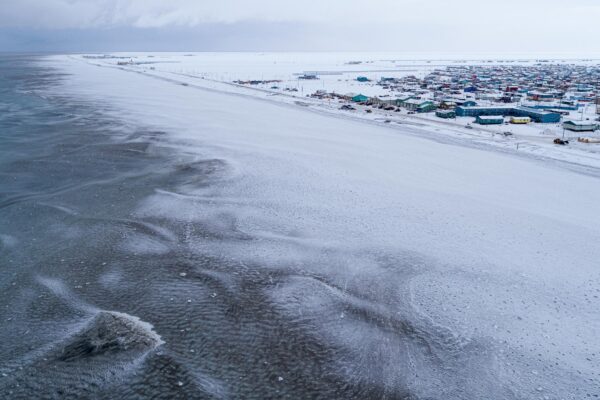
This story is part of a reporting collaboration between Alaska Public Media, Indian Country Today and the Anchorage Daily News on the 50th anniversary of the Alaska Native Claims Settlement Act. Funding for the ANCSA project was provided by the Alaska Center for Excellence in Journalism.
First of five parts.
UTQIAĠVIK — The portfolio of Alaska’s largest corporation includes two oil refineries, a construction business and one of the North Slope’s few hotels.
At Arctic Slope Regional Corp.’s headquarters in Alaska’s northernmost community, Utqiaġvik, the richly decorated boardroom features a skin boat used for whaling that rests on the floor, encircled by the conference table.
Since its inception, ASRC has paid out more than $1 billion in dividends, with recent per-shareholder payments as high as $7,000 a year. Only people with Alaska Native heritage can own shares, with a few exceptions. And the shares cannot be sold, only issued directly by the corporation or passed from existing shareholders to their loved ones.
Listen to this story:

This unique ownership structure was created by the U.S. Congress in a landmark land claims deal with Alaska Native leaders that turns 50 years old this month.
But while the deal helped create monetary wealth for ASRC’s 13,000 shareholders and those of dozens of other Alaska Native-owned corporations, it also came at a huge cost.
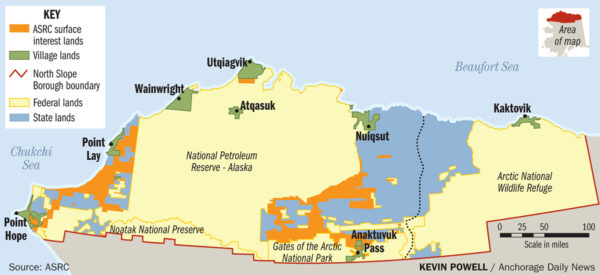
For all of ASRC’s assets, its shareholders still cannot claim title to their ancestral Iñupiat lands 25 miles from the corporation’s Utqiaġvik headquarters — or to any oil that might lie beneath them. That property now belongs to the U.S. government, which established the area as a naval oil reserve in the 1920s before later designating it the National Petroleum Reserve in Alaska.
To the east, Prudhoe Bay, one of North America’s largest oil fields, belongs to the state of Alaska, which receives royalty and tax revenue from the $35 million in crude piped off the North Slope every day. And nearly all of the Arctic National Wildlife Refuge is in federal hands, frustrating ASRC’s efforts to open it to oil development and provoking routine clashes over access and management with the Iñupiat residents of Kaktovik, the only village that lies within the refuge’s boundaries.
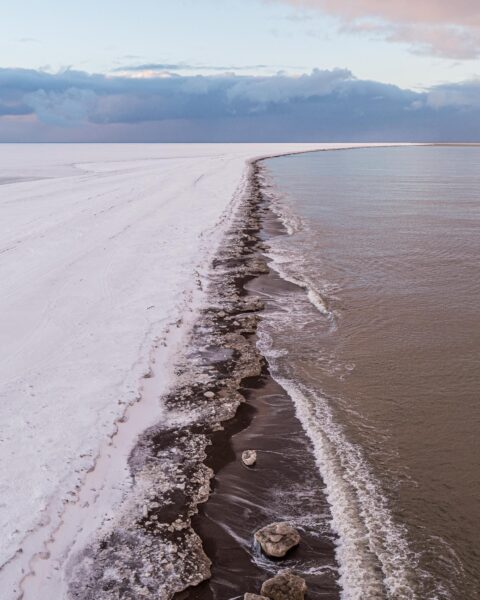
That tension between monetary wealth and lost land is at the heart of the Alaska Native Claims Settlement Act, which President Richard Nixon signed into law in December 1971.
The legislation was, in effect, an experiment by a mostly white Congress pulled between two conflicting approaches to Indigenous people: self-determination, and assimilation and termination — the concept of ending the government’s obligations to Natives.
By creating more than 200 Native-owned corporations like ASRC and seeding them with 44 million acres of land and $1 billion, the legislation was one of the most progressive land deals ever struck between the U.S. government and Indigenous people.
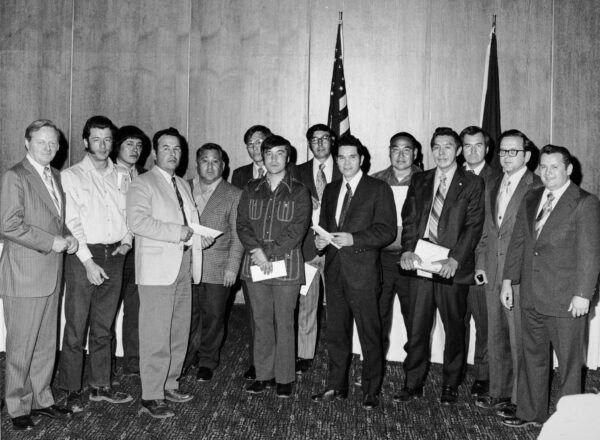
But by establishing for-profit corporations, Congress also pulled Alaska Natives into a Western, capitalist system and cut off access to lands that, for generations, sustained them through subsistence harvests of fish and game. The vast majority of Alaska lands — some 90% — were taken away from the state’s Native people.
“This capitalist system was imposed on us in a colonistic way: ‘Either you’re going to do it this way or you’re not going to do it at all. And you’re going to conform to this or you’re not going to do it at all,’” said Qaiyaan Harcharek, an avid subsistence harvester in Utqiaġvik. “It got us where we are today. But it’s a drop in the bucket for the Indigenous people of Alaska.”

HINDSIGHT
Today, with 50 years of hindsight, discussions about the settlement with Alaska Natives inside and outside the corporate world provoke complicated emotions — a reflection of the legislation’s wide-ranging impacts on Native and non-Native people in Alaska.
The North Slope, with its rich oil and gas resources, is a useful test case to examine the legislation’s huge cultural and economic stakes.
Utqiaġvik, the 5,000-person North Slope hub town, is almost unrecognizable from what it was in the 1960s, when a previous generation of Iñupiaq leaders first organized to stake their claim to their ancestral lands.
RELATED: Cheat sheet: Alaska Native Claims Settlement Act 101
Elders still remember emptying honey buckets full of sewage and melting ice on Coleman stoves to wash up each morning.
In the years following ANCSA’s passage, oil money began pouring into the community and its surrounding villages, allowing them to invest in infrastructure envied by other regions of rural Alaska.
Now, a 3-mile underground “utilidor” moves water, wastewater and utility lines around town, and gas fields not far away supply heating fuel to local homes.

Grocery stores sell hot food and fresh fruit and vegetables. And students, who once flew hundreds of miles even to reach middle school, can now attend Barrow High School and take classes from a tribal college, Ilisagvik. Iñupiaq is now taught at school — a stark change from a few decades ago, when government-run schools punished North Slope residents for speaking it.
“I got my hands whipped,” said Harry Brower, 63, the borough mayor.
The region’s modernization grew out of ANCSA’s passage in 1971 and the establishment of the North Slope Borough the following year. But the Iñupiat had to fight for both.
STATEHOOD
The push toward a settlement lasted years, and it began as the state government started selecting pieces of its land entitlement granted by Congress under the 1958 Statehood Act. The state got to select 100 million acres, about one-fourth of the land in Alaska.
Some of the areas it chose caused conflicts with Native communities, whose members were encountering newly built cabins on their ancestral lands and greater competition from non-Native residents for fish and game.
Unlike in the Lower 48, Alaska tribes hadn’t been conquered in wars and they hadn’t signed treaties ceding their lands. So Alaska Native groups began filing land claims.

While the Native leaders largely enjoyed support from the state’s representatives in Congress during the land claims era, including Rep. Nick Begich and Sens. Ted Stevens and Mike Gravel, they also faced disinterest, opposition and blatant racism.
Oliver Leavitt, an ASRC board member and Iñupiaq elder who spent time working with Congress in the 1970s, described attitudes there in blunt terms: “To them, you were a f–king savage.”
“They just didn’t give a damn about you,” Leavitt, 78, said in an interview in ASRC’s Utqiaġvik offices. “They’d tell you to get the f–k out of their office.”
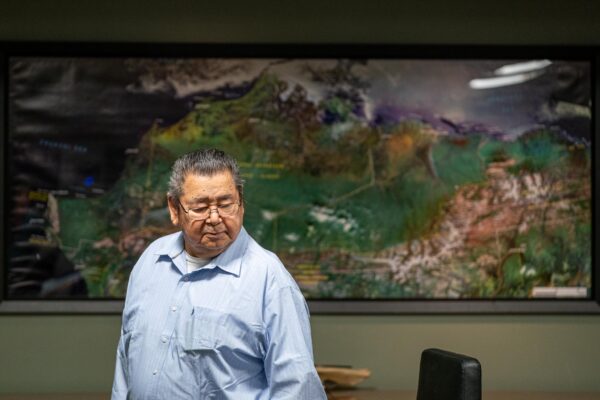
OIL
An event on the North Slope dramatically changed those political dynamics: The 1968 discovery of the Prudhoe Bay oil field.
The field contained billions of barrels of oil. But the Native land claims stalled construction of the trans-Alaska pipeline, which got congressional leaders’ attention.
“People really could care less about the Alaska Natives,” Ron Birch, who worked as chief of staff to Stevens during the land claims era, said in a recent interview. “But senators and congressmen out of Texas and Oklahoma and Louisiana cared a lot about big oil.”
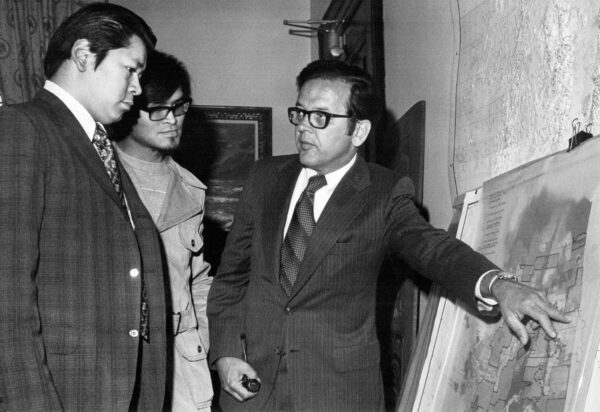
Other dynamics converged to help overcome institutional opposition to the settlement.
One was a homegrown movement of Alaska Native leaders — activists and regional Native organizations from around the state who coalesced into the Alaska Federation of Natives.
The group, led by figures like Emil Notti, Don Wright, John Borbridge and Willie Hensley, included representatives from the North Slope to Western and Southeast Alaska. And it fought, said co-founder Hensley, with “two hands tied behind our back.”
At one point, AFN had $9 in the bank, and one man mortgaged his house to fund his participation in the movement, Hensley and other early AFN leaders recalled during October retrospectives hosted by the Alaska Historical Society. AFN ultimately secured loans from a tiny Alaska Native village that had made money from an oil and gas lease sale, and from a Washington tribal government.
“We didn’t have any lawyers, initially,” said Hensley, who wrote a key research paper on Natives’ legal standing for a 1966 university graduate course. “We didn’t have any money. We didn’t have any time.”
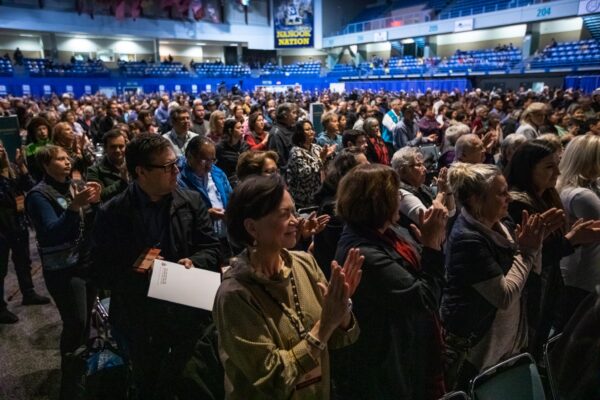
Some in Alaska’s business and political establishments opposed transferring land to Native people, and AFN’s leaders said they faced death threats and hostile newspaper editorials. But Stevens, Gravel and Begich all helped push the legislation across the finish line in Washington, D.C.
Stevens, the Republican senator, was convinced that any Alaska lands that could be shifted out of federal ownership would end up benefiting the state, said Birch, his chief of staff at the time.
“Ted would explain tirelessly, ‘No, I’m taking the land away from the federal government and giving it to Alaskans,’” he said.
Gravel, Alaska’s other U.S. senator, was a Democrat who owed his election to the Alaska Native community, and he supported the legislation. Nixon’s White House and some of his top aides were also key allies and early supporters of a 40-million acre settlement, which gave political cover to Republican lawmakers who had previously opposed a deal with that much land.
“‘Tricky Dick,’ they called him. But as far as I’m concerned, he’s a hero,” Hensley said. “He’s the fellow who created self-determination.”

SETTLEMENT
The drawn-out political process that led to the settlement tested the bonds between the Native groups that came together to form AFN, and they forced the North Slope’s leaders, along with others, to make concessions.
A particularly difficult set of questions arose around how to divide up the money and land that Congress would set aside on a statewide basis. In the end, the lands were split up based on the North Slope’s preferred formula, which tied each region’s share to the size of their original land claim.
But other parts of the settlement were divided on a per capita basis, which the thinly settled North Slope vehemently opposed, saying the method benefited more populous Alaska Native groups at their expense. Another provision opposed by the North Slope that was included in the legislation required corporations to share 70% of their resource revenue — including from oil.

North Slope leaders were some of the most strident in their arguments for the settlement, even withdrawing from AFN at one point, and their contemporaries said their positions helped move the negotiations’ center of gravity.
Among those early leaders was Charles “Etok” Edwardsen, who protested outside a 1969 Prudhoe Bay lease sale held by the state with signs that read: “2,000,000,000 Native land robbery” and “Eskimos own North Slope.”
Protestors handed out leaflets that said the lease sale was “perpetrating of economic genocide on a native minority,” and Edwardsen told reporters it represented “the rape of Alaska Natives.”
After the settlement’s passage through Congress, North Slope leaders wrote to Nixon asking him to veto the legislation. And when AFN convened to consider whether to recommend to Nixon that he sign the bill, the North Slope delegation voted no.
Its leader, Joe Upicksoun, delivered a scorching indictment in a speech.
“You can obviously see that I am hurt and frightened and perhaps bitter,” he said. “This hurt and fright and bitterness have been caused by the other Natives demanding more than their just share; by the state being dishonorable in grabbing whatever she could; by the Congress’ incompetence in not really understanding the problems and not trying to; by the oil companies stepping on us as if we were not people; by Western society moving in on us and brushing us aside.”
Hensley said other Native leaders felt similarly to Upicksoun, even as they voted to recommend that Nixon approve the settlement.
“You’d think there would have been celebration. But there wasn’t — we knew what we were giving up,” he said at the historical society’s recent retrospective. “The remarkable story is that people just didn’t sit back and cry about it all. They said, ‘What the heck, let’s get this thing together and let’s see what we can do with it.’”
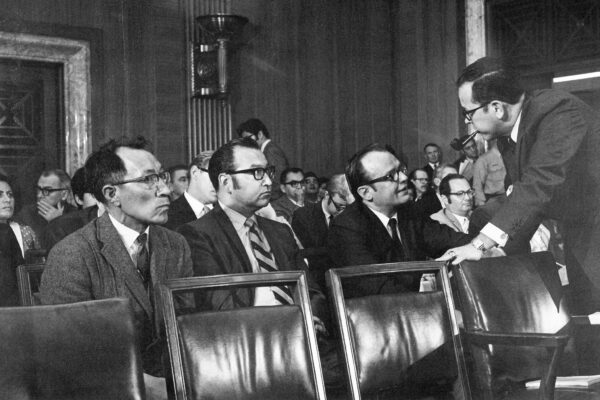
NO ‘TRAIL OF TEARS’
The ink on the settlement wasn’t even dry before the Iñupiat began work to improve on the deal Congress made with them.
Eight months before Nixon signed ANCSA, the region’s leaders had submitted their petition to form the North Slope Borough, which at 89,000 square miles is roughly the size of Minnesota. After voters in the region approved it, the new government entity began levying taxes on infrastructure built by oil companies.
The borough now raises $400 million a year in property taxes — levying more than $100 million on ConocoPhillips alone.

The money is invested in water and sewer lines, communications infrastructure and schools. It also pays for police and fire departments, a wildlife department that does bowhead whale research, and a search and rescue department with four aircraft, including a massive Sikorsky helicopter.
Major oil companies sued to block the borough’s formation, but they were unsuccessful.
“There’s always, for the longest time, been those sentiments of the old guard: Don’t give any land to the borough. Don’t give any lands to the Natives. Fighting tooth and nail because oil is at stake up here,” said Gordon Brower, the borough’s current planning director.
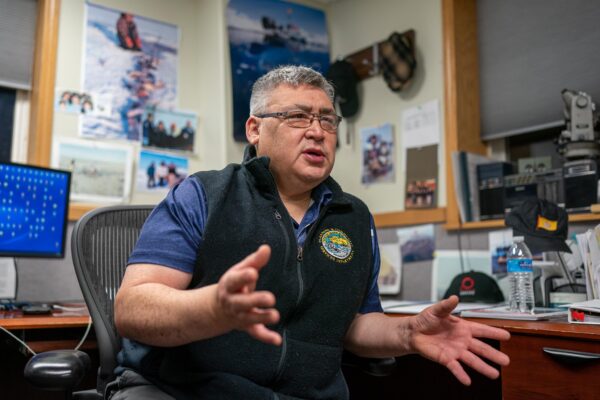
ASRC, meanwhile, got to work creating an array of subsidiaries, including a construction company and fuel distribution and tourism businesses.
It also began signing leases with oil companies for the land ANCSA granted it — and for a tract inside the Arctic National Wildlife Refuge that it obtained through a federal land exchange orchestrated during the Reagan administration. So far, ASRC’s leasing revenue from that area, which doesn’t have to be shared with other Native corporations, is likely at least $50 million, according to public documents.
ASRC has now been listed as Alaska’s top revenue-generating business for the past 27 years. It says it has 13,500 employees across the country and ranks among the top regional corporations in its yearly cash dividends, though the impact of the COVID-19 pandemic did force reductions.
Original ASRC shareholders received $7,000 in 2018 and 2019, and the company employed some 500 shareholders during that time. At least one regional Native corporation has paid out less in dividends over its entire, five-decade existence than ASRC has paid in a single year.
North Slope leaders say they’re keenly aware of their relative fortune, particularly when they compare themselves to Native people outside Alaska.
“Ain’t no trail of tears in Alaska,” said Josiah Patkotak, who represents the North Slope in the state House. “We got the best deal that a Native people has got. Ever.”
Patkotak’s father, Crawford, is board chair and executive vice president of stakeholder engagement at ASRC, which paid him $2 million last year. In an interview at the corporation’s Utqiaġvik office, Crawford used a poker analogy to describe how the Inupiat have fared since the settlement: starting with two deuces — a very tough hand.
“Look at the challenges we had to face. Look at what mountains we had to climb. Look at the valleys we’ve had to endure. And we’re still here,” he said. “We ain’t going anywhere.”
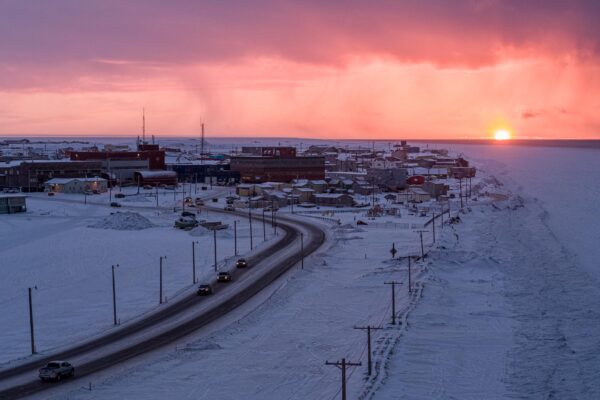
Next: Many see Red Dog as an ANCSA success story. What happens when the ore runs out?
Nathaniel Herz is an Anchorage-based journalist. He's been a reporter in Alaska for a decade, and is currently reporting for Alaska Public Media. Find more of his work by subscribing to his newsletter, Northern Journal, at natherz.substack.com. Reach him at natherz@gmail.com.




